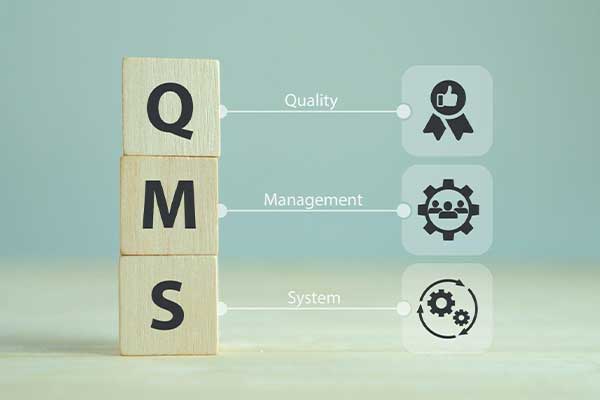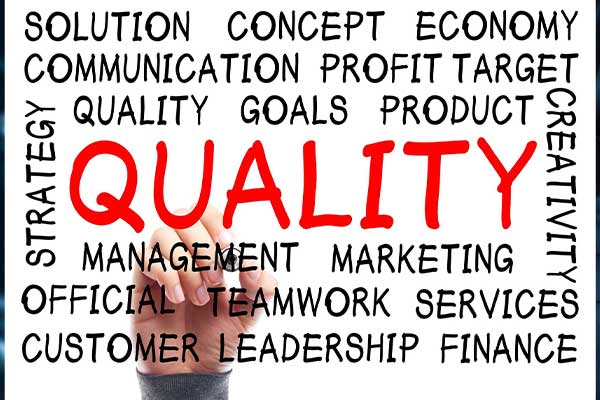ISO 9001 standard mandates that organisations create quality objectives that help them materialise their quality policy. However, there need to be more specifications when defining the requirements to write these quality objectives, which makes the entire process challenging. The following article will provide you with a guide on how to determine your quality objectives and best communicate them as per the ISO recommendations.
What are quality objectives according to ISO 9001?
According to ISO 9001, quality objectives can be described as measurable quality control established by the organisation to help maintain the consistency of their products or services. A more straightforward definition of quality or ISO 9001 objectives is that they are goals taken from the quality policy to make quantifiable action plans.

During the Quality Management System (QMS) planning stages, companies are encouraged to create fundamental quality objectives and modify them as and when needed during the upcoming reviews. Depending upon the nature of your organisation, you might need quality objectives considering factors such as product quality goals, process efficiency, or delivery improvement. Some examples of quality objectives include:
• Maintaining X level of customer satisfaction rate.
• Achieving X percentage of on-time deliveries.
• Having zero product recalls.
• Improving operational efficiency by X per cent.
Hence, quality objectives are extraordinarily customisable and dependent upon the unique nature of the organisation.
ISO 9001 and quality objectives
Clause 5.2.1 of the standard dictates that the top management must establish a quality policy appropriate to the organisation’s purpose, helping it align with its strategic direction. The top management must also provide a framework for reviewing the quality policy and objectives, including any modifications made to refine or continually improve the QMS.
The quality policy was made for continuing suitability in the earlier version of the standard, namely the ISO 9001:2008 version. In the latest version, leaders are urged to make a quality policy appropriate to the organisation’s context, reviewing it to satisfy the needs of all relevant interested parties. This added leverage reinforces that quality objectives and policies should be customised according to industry-specific trends.
Clause 5.2.2 focuses on the communication channels which should be created to relay information about the quality policy and the quality objectives to different employees of the organisation. Only when employees are aware of the tangibility of quality objectives can they work towards achieving them. Hence, specialised channels should be created to ensure enhanced staff awareness about the QMS and quality objectives.

This means that the documented information regarding the quality policy should be easily accessible to anyone who wishes to further their knowledge about any organisational efforts. This also aligns with clause 7.5 of ISO 9001:2015, which states that the quality objectives, process design, acceptance criteria, monitoring and measuring data and management review should be linked together and made readily available to all relevant interested parties. Organisations can choose the format of this documentation, including making it available on social media, their website or in old-fashioned paper documents.
Additionally, clause 6.2.1 of ISO 9001 says that organisations should establish quality objectives at the relevant functions, levels and processes that are adequate for the QMS. This means that the quality objectives should be consistent with the quality policy. The management should take into account applicable requirements, should be appropriately communicated, should be monitored and should be relevant to the conformity of the products.
How to write quality objectives?
Utilising the Specific, Measurable, Relevant and Time oriented (SMART) philosophy helps to create quality objectives that are attainable, realistic and measurable and align with the requirements outlined in clause 6.2.1.
Therefore, when writing the quality policy, it should be stated in clear terms, and you should focus on precision to ensure that every team member remains on the same page. The objectives need to be reviewed, and the results should be quantifiable.

Hence, keep in mind when the objective should be completed, how the feedback will be assessed, and the agreed standard for good feedback. Attainability is another characteristic feature, and you must ensure that the established objectives are relevant to the organisation’s capacity. To remain relevant, the established quality objectives should be aligned with the organisation’s quality policy. Lastly, it should be stated in unambiguous terms when the specific objective should be achieved.
How to implement quality objectives?
To implement quality objectives, ensure that the established quality objectives are appropriately documented and communicated with the team. Go on to evaluate the methodology by driving a culture of continuous improvement in the QMS.
Evaluation methods should be planned at regular intervals to check the progress and the efficiency of the quality objectives. Regular evaluations will also help you determine if the quality objectives require upgrades or updates. Review the objectives as needed to ensure the workflow is managed and maintained correctly. Lastly, create an emergency preparedness plan if the organisation fails to meet the established quality objective.
You can contact us to learn about the ISO 9001 implementation process in your organisation.
Conclusion
Quality objectives are quantifiable steps that help materialise an organisation’s quality policy. To write good quality objectives, utilising the SMART philosophy is helpful.








Users Comments
Get a
Quote